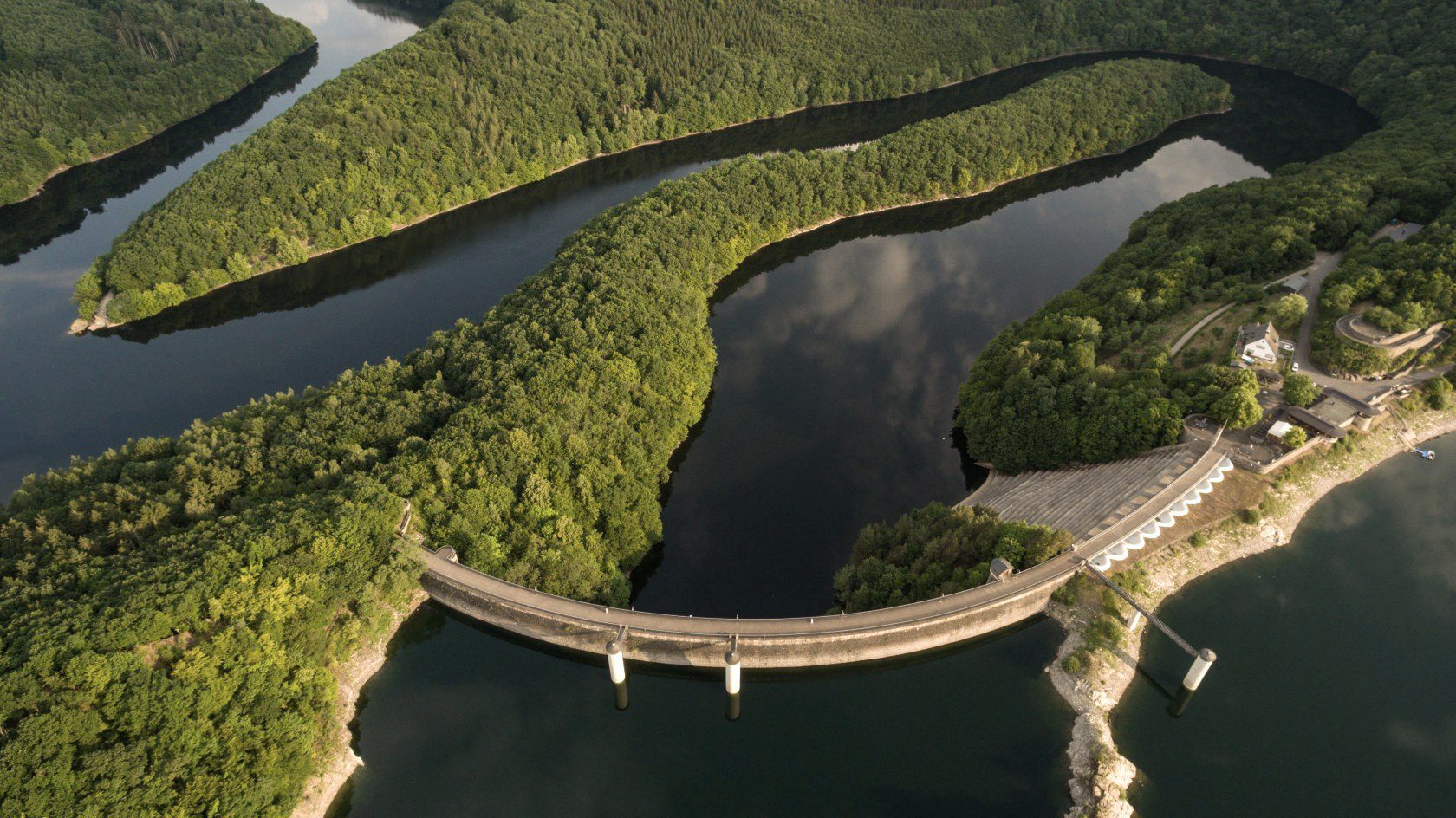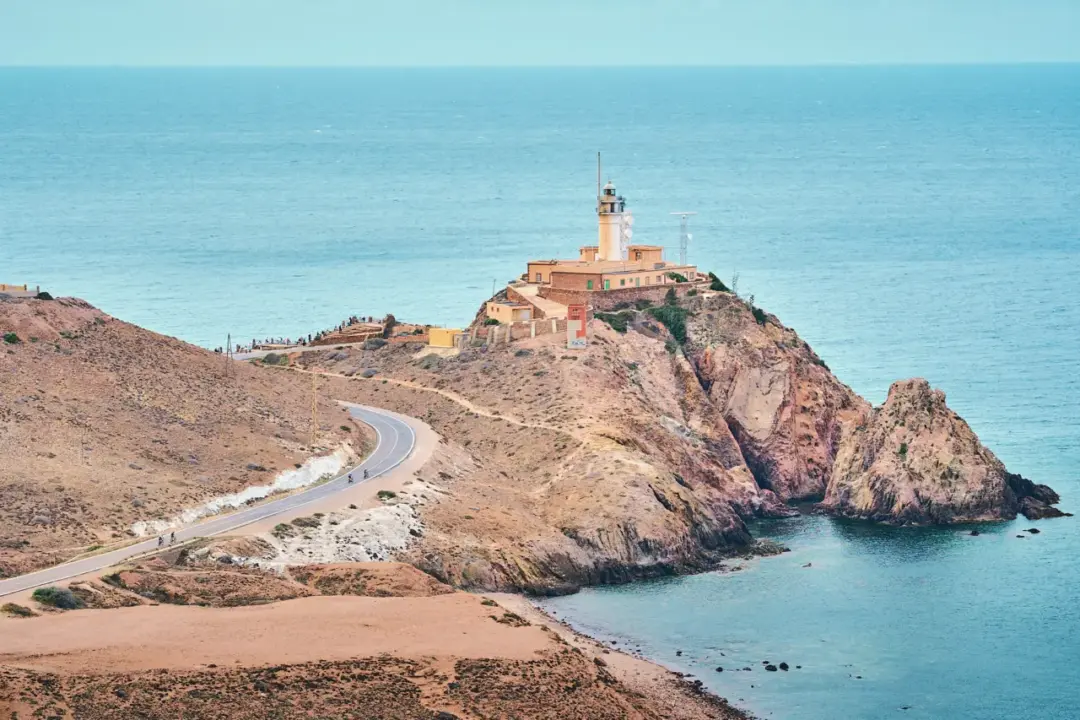The lady who serves breakfast in our morning hotel cares, scarily bolted. A large group of Dutchmen suddenly want something to eat in the bar. It is a bar mainly geared towards a small 'cafecito', 'cortado' or a quick croissant. In rapid Spanish, she makes it clear to us that we have to choose something. Fruit, yoghurt, toast, coffee, juice. And do 'ahora'. Eventually, all sorts of dishes come out of the kitchen at breakneck speed. The sandwiches with Serrano ham were not actually on the menu. Vale. We take it. Everyone attacks eagerly, as it is carbohydrate piling for today. Almost 130 kilometres with 2600 altimeters await us. A hefty challenge, but one that everyone seems to be looking forward to. Cycling in the Basque Country. This is Part 3. part 1 and part 2!
Photos: Ruben Hoogland and Sander Kolsloot. Text: Sander Kolsloot
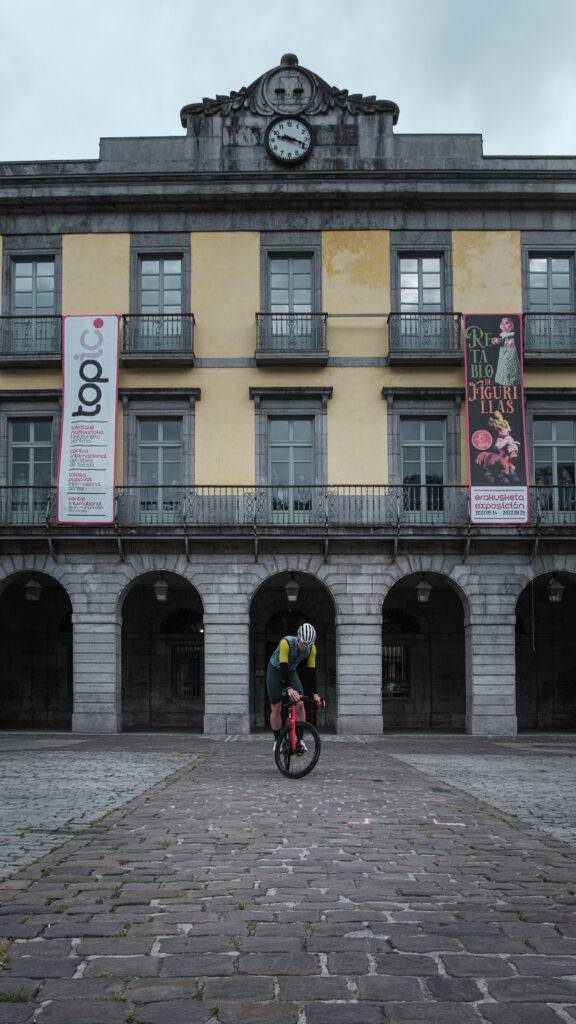
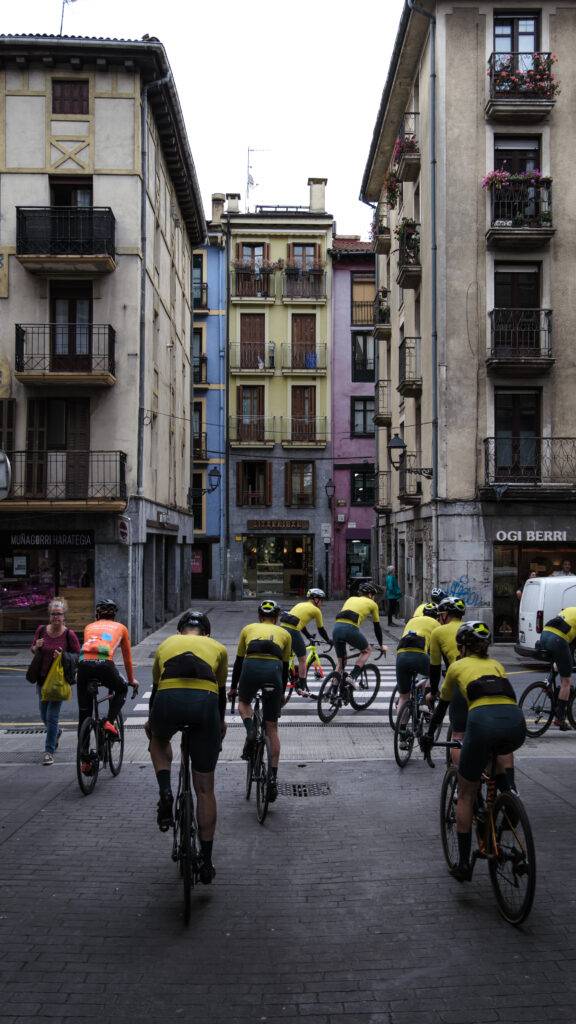
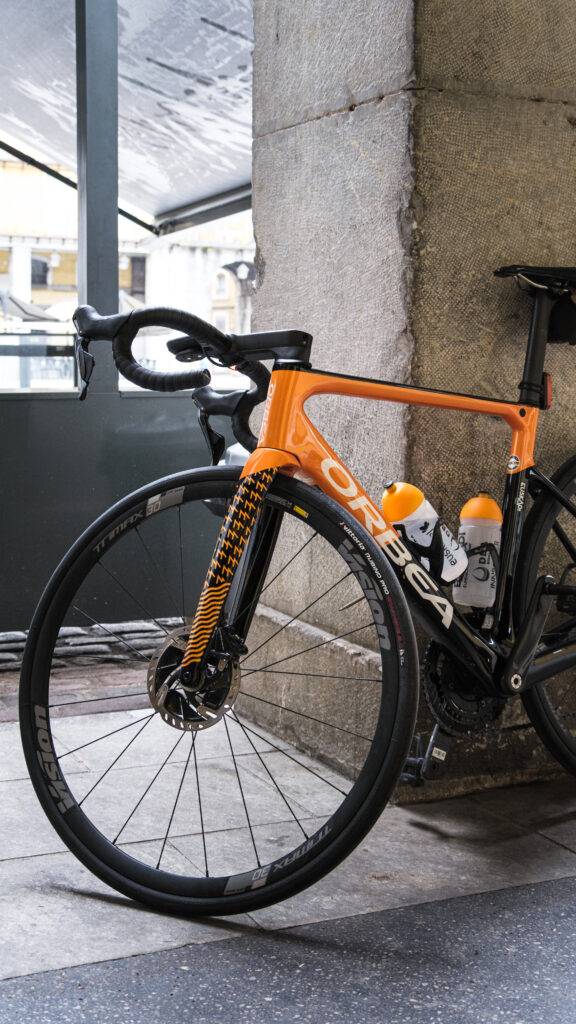
We are in good company
The two petite figures of the Euskaltel men in the square give enough away: they were made for this terrain and as a local team (sponsored by Etxeondo) they are well liked in the region. When a little later an equally fit lady from the Laboral Kutxa team also makes her appearance, we know enough. We are in good company. Top chef Iñigo Lavado is also freshly washed at the start. This promises to be a great day.
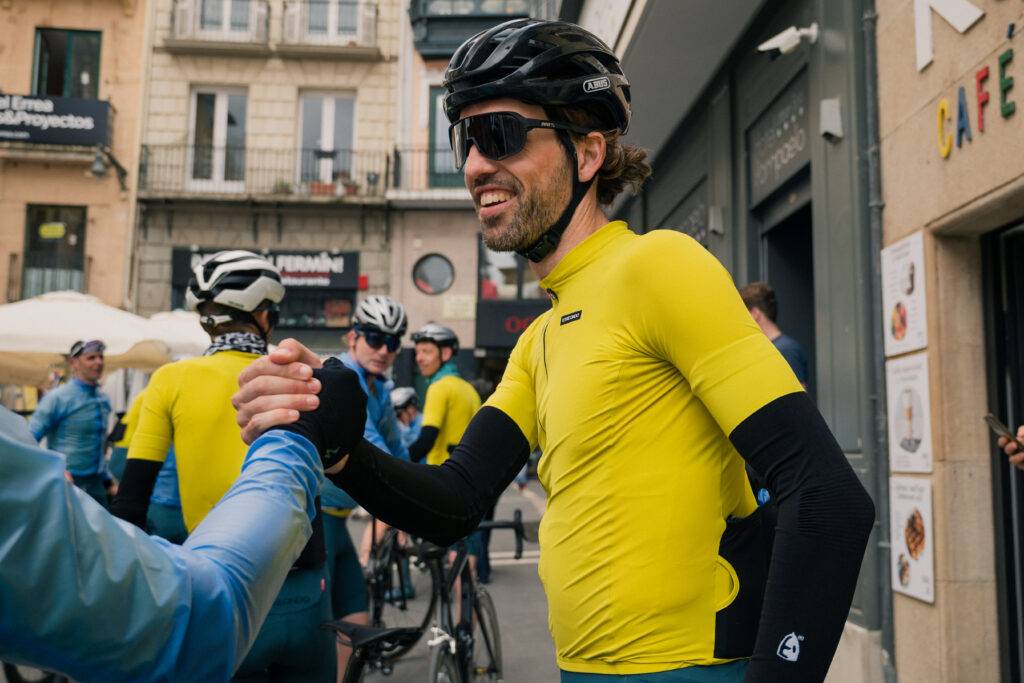

A big round
When the Vuelta lays down a stage in the Basque country, they often choose a route gdie similar to ours. Not surprising, as the beautiful hills (or is it mountains?) are at your feet. Names like Azpirotz, San Miguel and Lizarraga are music to many an enthusiast's ears. On the Azpirotz, they used to lay another finish line in the old days. Luigi Barral and Martin Piñera could throw their hands in the air here. We are talking about 87 and 61 years ago, respectively. In current times, this is just a warm-up for the real thing at San Miguel de Aralar. For many a lot more recognisable with Fabio Aru turning Tom Dumoulin crazy here in 2014 and Richard Carapaz as recent winners. What does that mean for the ordinary soul? That it's going to hurt. As a present, a very nice view of the valley awaits.
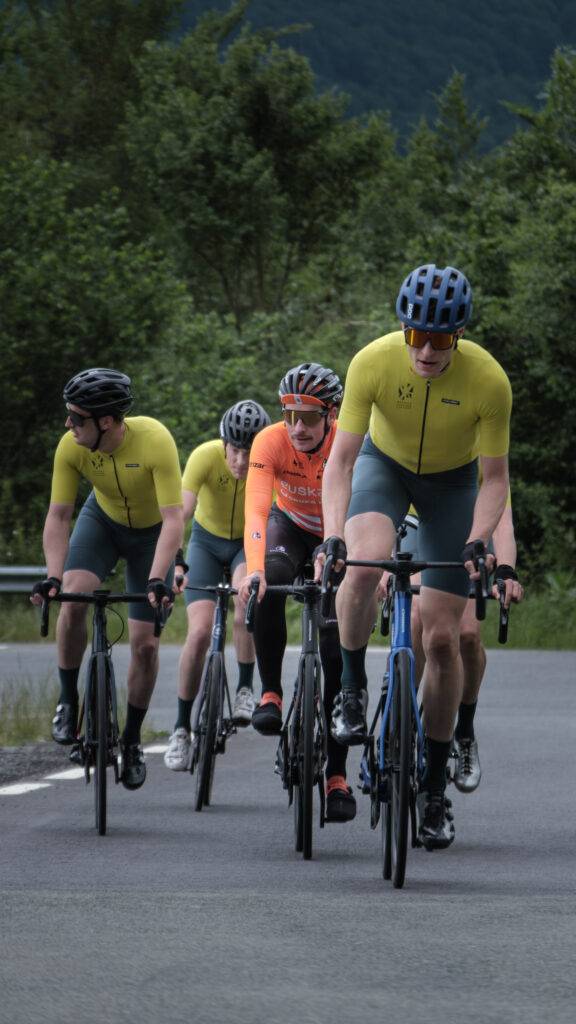
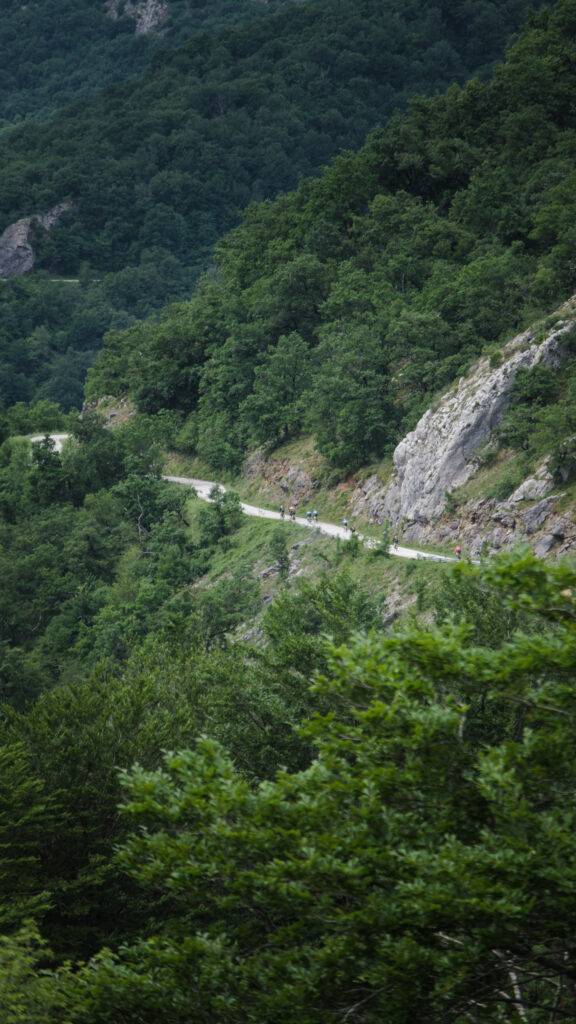
Grupetto Peio - 'Grupeio'
The road immediately climbs gently uphill. After just under 20 kilometres, Azpirotz presents itself. Pretty soon I ride slightly behind the group. With me also Peio Goikoetxea, one of Euskaltel's slightly older riders. Together with Flip, we form the 'Grupetto Peio', which is immediately christened Grupeio. What delightful company on a climb of almost eight kilometres in length. Patxi from Etxeondo also joins us and later Haimar descends to help us. It is a taster for the longer and steeper San Miguel de Aralar. As we near the top, we ride through green forests and suddenly we spot a beautiful deer. Almost unique to this region. A nice touch.
San Miguel with Grupeio
After an ultra-short descent, the San Miguel lies at our feet. 'Grupeio' soon forms and despite the steep climb it is a top experience. Own pace up, talking about training in the region, the course and meanwhile Peio updates us on the surroundings. It's steep and it's no wonder Annemiek van Vleuten holds the QOM here. The climb is irregular and it alternates between five per cent with peaks of 13 (!) per cent further up. The closer to the top the more the landscape opens up. The view to the right is amazing. As we press on before the summit, we manage to snap a quick photo. Pure pleasure. At the top, after a short break, we turn and get ready for the descent. Haimar and Patxi warn us about the way down. 'Easy, because it's steep'.
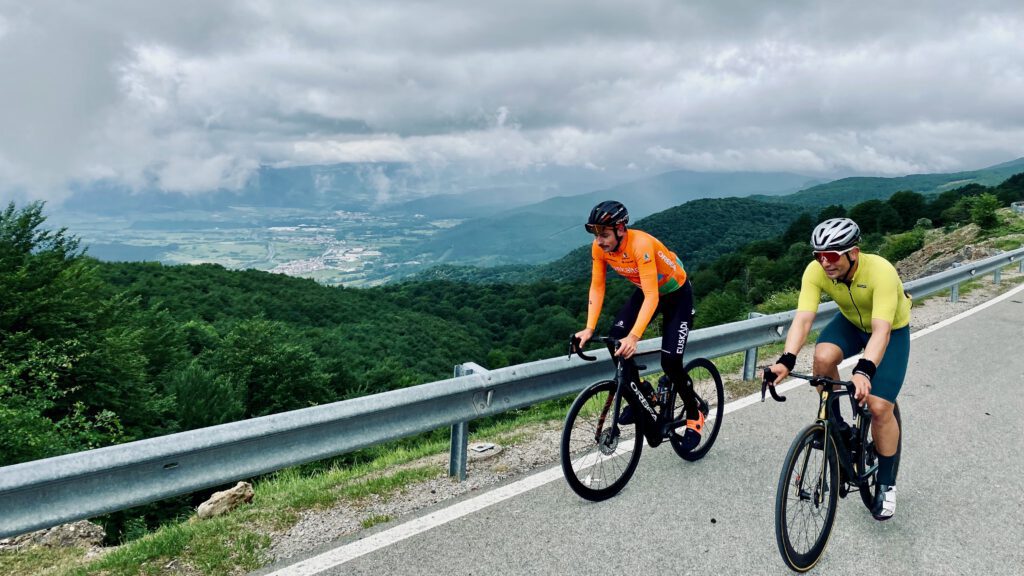
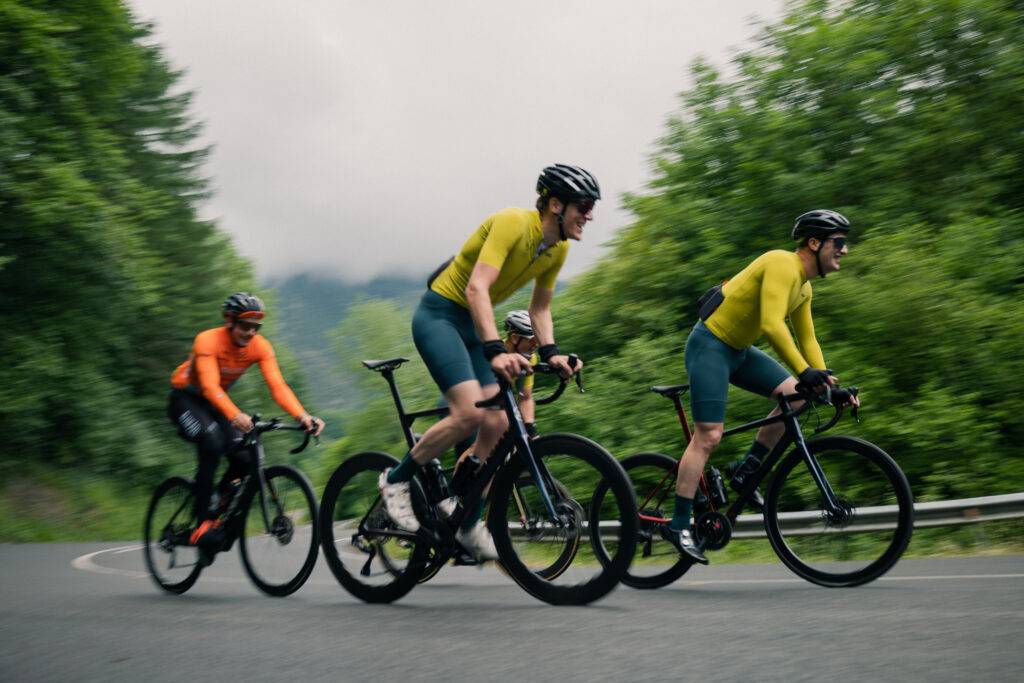
Cycling in the Basque Country: The definition of a goat trail
When I think of Vuelta, two things come to mind:
- The extreme heat on long, endless 'crossing stages'. Straight roads, dry fields. Not doable
- Goat trails. Climbs with a rise above 15 per cent where the trail uphill is more suitable for a herd of goats than a round peloton
The descent of the San Miguel is one of those. A goat trail. It goes down steeply and for a long time the gradient does not reach single digits. A road surface that seems to have been imported straight from Wallonia. What follows is a descent with clenched buttocks and with the wind. The distinctive wind that always seems to blow through this region. Eventually, everyone reaches the foot of the climb safely. Massages are required and mild neck cramps guaranteed.

Lizarraga
With a view over the valley, it is good climbing. Our Grupetto Peio has grown a bit bigger again, when Daan also joins us. Ruben circles around us, while the rest try to stay in the wheel. Lizarraga is one of the finest training climbs. Not too steep and, unlike the earlier goat trail, a real breath of fresh air. As mentioned, the views are stunning and as you ride up, 'Liza' also spoils you with some stunning hairpin turns. The two tunnels at the top provide a nice backdrop for a photo and in the little restaurant at the top, cortados are already waiting. Because that too is Basque country. After the sour comes the sweet!

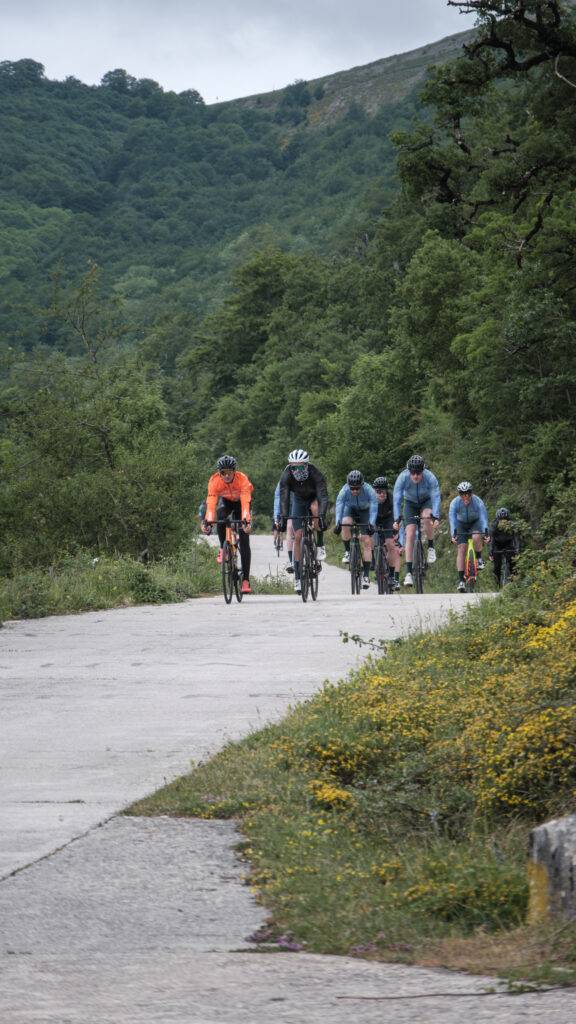
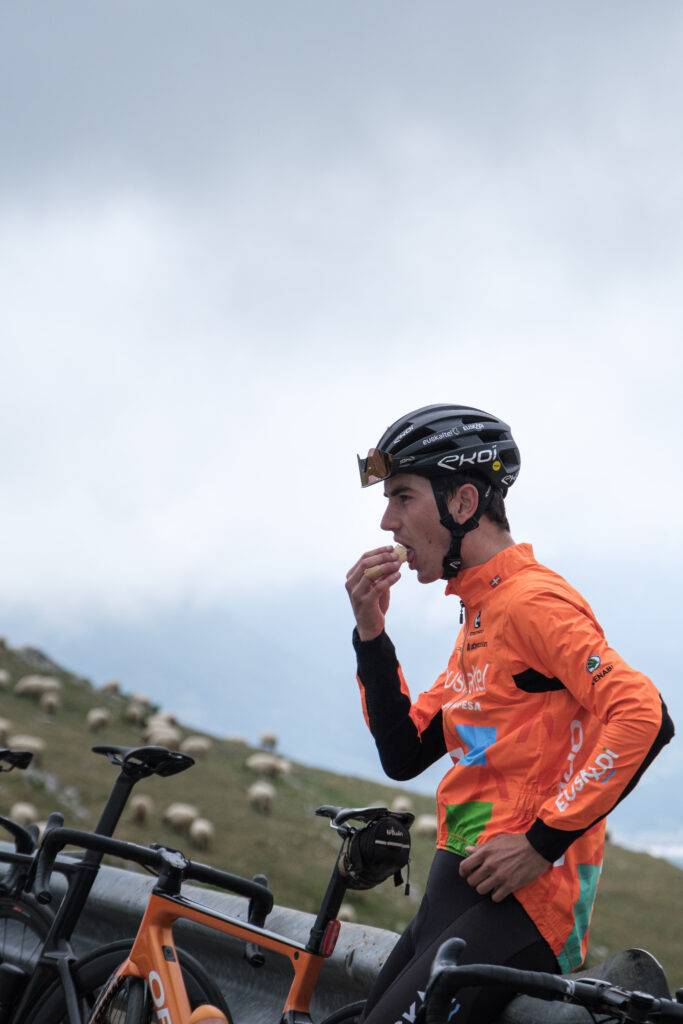
Cycling on two flat tyres
How much luck can you get? On the descent from Lizarraga, with the wind hitting my high wheels from all sides, I drive over a stone. I saw m too late to avoid it. After a quick check I continue. I don't know then that I am riding on two deflated tyres. I tackle the final climb. Supported by both Unai and Peio, we ride up in a nice grupetto. It's tough and near the top I can't keep up with the group. We ride on, but when we have one kilometre to go I push on. In a bend, I almost go down and Peio shouts "leak!". At the top, the defect is quickly found. Flat tyres, front and back. With only 1.8 bar, I am glad I made it to the top. Expertly I am helped. As a spectator, that's nice too.
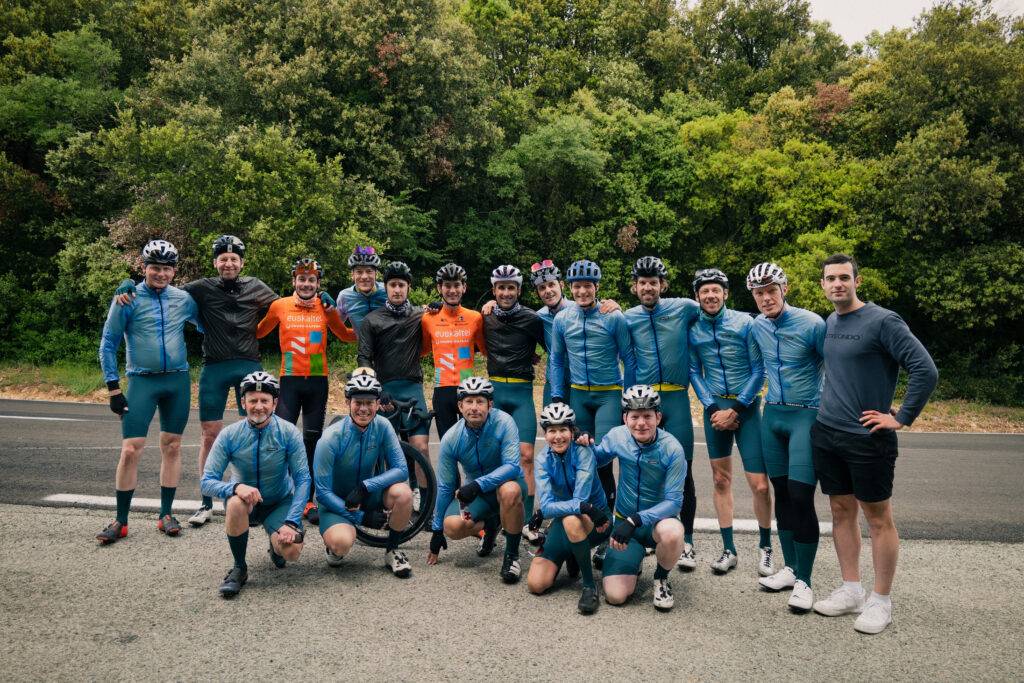
Windmills and bulls
The wind farm at the top of the mountain is working overtime. The wind blows briskly across the plains. This is where you can make the difference in a stage. Or here you can suffer greatly. The final climb leads us to the top, near the mills and then towards Pamplona. Pamplona, home of Miguel Indurain and the scene of the running of the bulls every year. When everyone lines up in the narrow streets, the bulls are let loose at 8pm every day. Often things go well, but sometimes men are caught. As they enter the city, the saint watches and the brave men and women are called out. A spectacle in itself. I watch the ascent of the central square and the path the bulls take from the car. End of stage. But what a day for cycling in the Basque Country.


